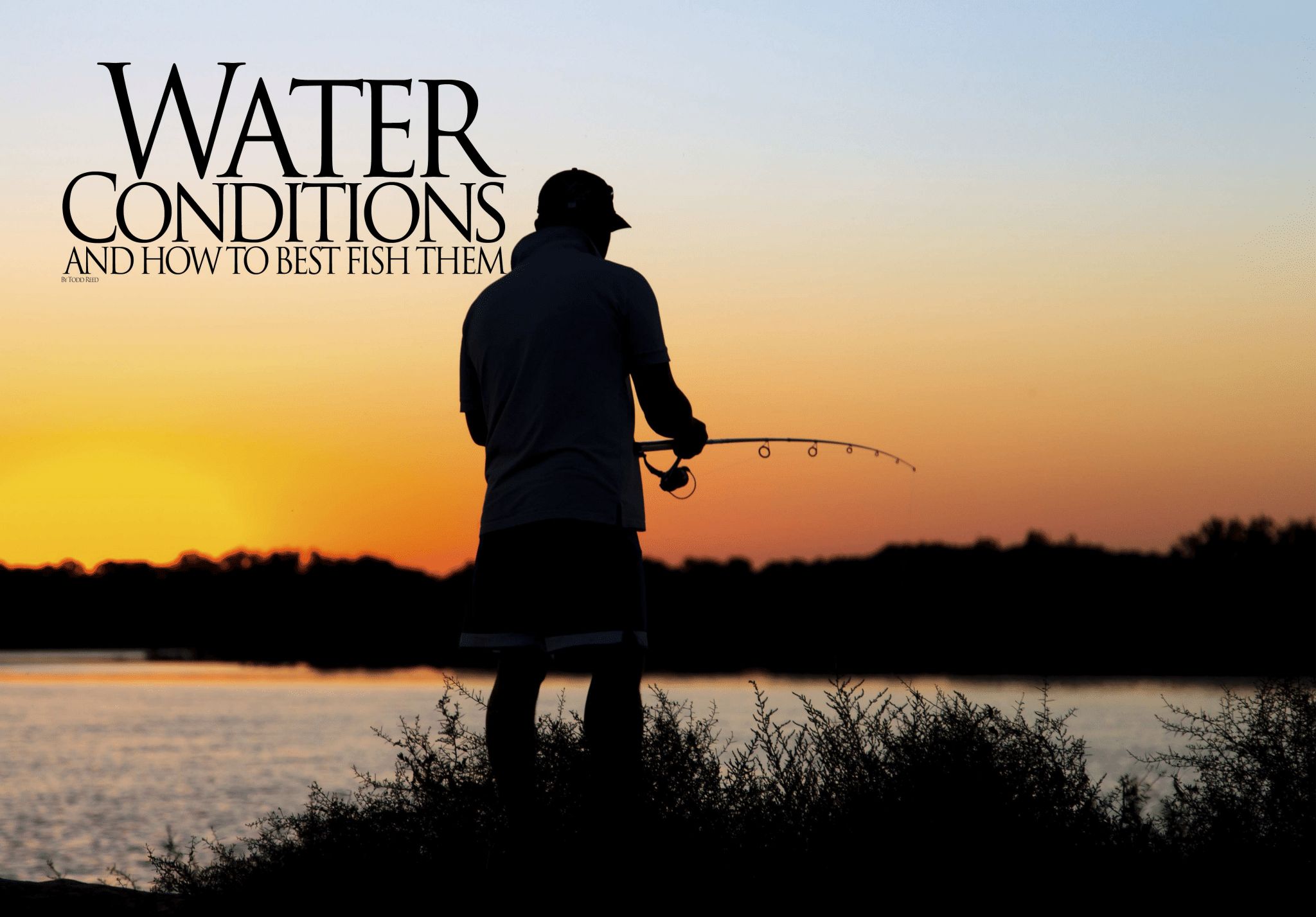Water Conditions and How to Fish Them

Water Conditions and How to Fish Them
That crisp air that we feel each morning is a sign of things to come, fall is definitely in the air around the state of Iowa. This can be a welcome sign for hunters, hikers and anglers ready for cooler temperatures. The change in weather can also bring many different weather systems through the state that can alter our fishing areas in the matter of a few hours. Anglers may need to change things up instantly to find and catch fish through these changing times. When storms, or the changing of seasons brings you variables on the water, we must change a few things to locate fish and keep them biting.
The biggest variable this time of year is temperature change. Cold fronts that blast into your part of the state that last two or three days can really drop the surface temperature in a body of water quickly. This can cause the fish to hide out in deeper water, away from the cooler shallow water. If you have been catching fish in shallow water, less than four feet, those fish can be affected by the cold front and move into deeper areas of the lake or river to more stable/warmer water. Oftentimes this isn’t a huge move by the fish, but it will certainly relocate them for a few days. Always check nearby deeper holes or drop-offs before giving up on your favorite shallow water areas this time of year.
Another huge variable this time of year is the actual water color. If you fish small or large rivers around the state, this can happen in a blink of an eye. Heavy storms can change the way the waters look, and that will no doubt change where the fish will move in their environment. Fish may seek out water that is close by that wasn’t affected by the heavy rains, nearby backwaters would be a great place to look on your river system for cleaner water.
Muddy water can happen on lakes and ponds too, but is typically more of a gradual change. In either scenario anglers will often still be able to catch fish, however a few changes to their baits will be necessary. Instead of using the natural colors such as white and browns, using black and chartreuse baits will help the fish track down your baits in the muddy conditions. A couple other things to do when muddy water faces you; add rattles and scent to your baits. The fish’s sense of sight will be much less powerful, so they will rely on scent and hearing to find their next meal.
Fall also brings the “weed variable” back into focus. Summer and late summer are a great time to fish in and along weed lines, however there comes to a point in the season of fall when the fish will get away from the weeds. When aquatic vegetation starts to die, it decomposes in the water. This natural process uses up oxygen. The oxygen level in and around dying/brown weeds will be much less this time of year and the fish will not live there. What was a wonderful weed patch one weekend might be a brown dead sea by the next weekend. To counter this annual decomposition of weeds, look to nearby deeper water. This adjacent water will be much healthier for the fish and they will continue to feed in the fresh, highly oxygenated water.
Last but not least is the wind effect during the fall season. High winds can last all day during this season, sometimes for days on end. This isn’t a reason to stay home as most would think. Wind can actually be a great partner in the fall. Wind will position baitfish, especially after several days of wind. When fishing from shore on the windy banks, use the wind just as you would current in a river. Cast your favorite baits out and let wind float and ride your bait naturally as you bring it back for another cast. This works well with bobbers as well as casting lures. It is hard to cast into the wind, and you will want to use your best spinning rod and reel for these windy days.
When fishing windy areas of lakes or rivers, try to do so where there is rock on the shoreline. If there is not rock, then the area will be muddy and make things much more difficult. Find those windy areas with rock, and let the wind bring the fish to you!
Fall is a magical time of year for fishing, all species want to make that one last run for food as the winter months approach. Plan carefully and be ready for whatever Mother Nature throws at you this fall. By making a few minor changes, you could have some of the best fall fishing you have ever had.
by Todd Reed
October 2020

